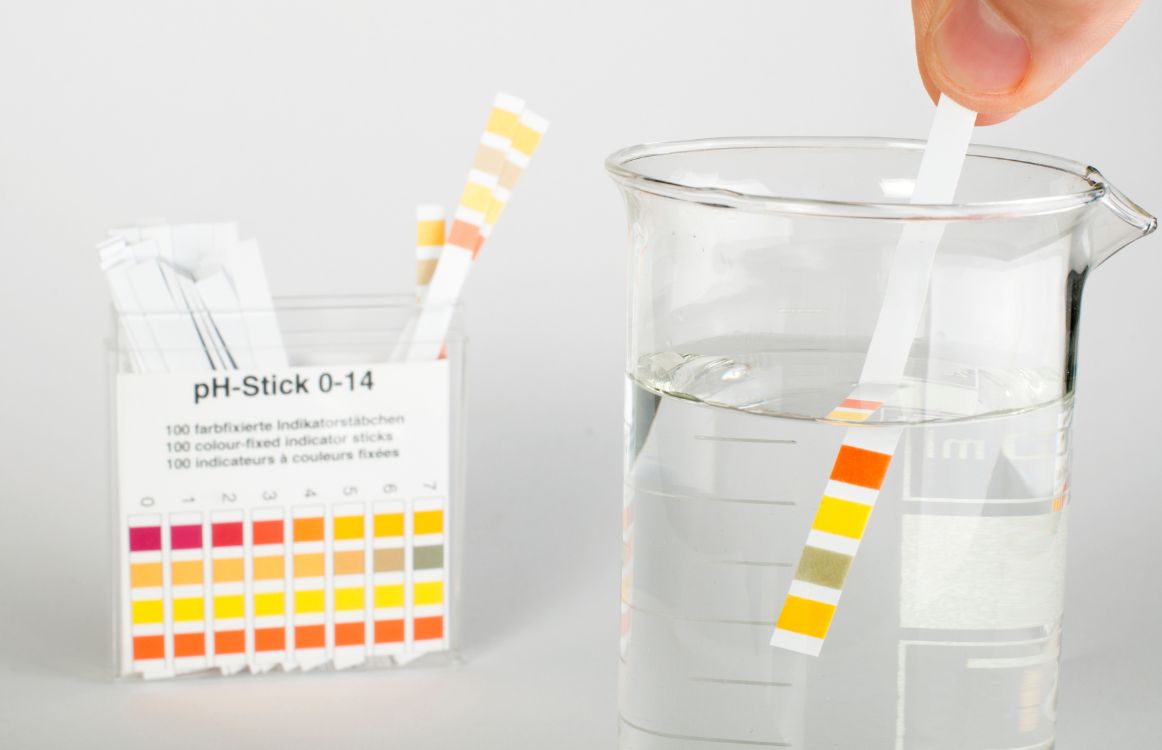The Ideal Water pH for Brewing Beer
For brewers, a common question that arises revolves around the ideal water pH for brewing beer. What should your pH be?
Unfortunately, the answer to this question is not as easy as citing a single digit or a range of numbers from a scale.
So much goes into the chemistry of brewing that the pH of your brewing water almost doesn’t matter.
Almost.

Brewing Water
You see, in general, there are two kinds of water brewers will have access to – groundwater, which is chalk full of minerals but has very little if any solid material like grass or algae, and surface water, like the kind you get from lakes, rivers, and springs, which has very little dissolved minerality but much more solid matter that will need to be filtered out.
We often note that mountain spring water or lake water is best for brewing, but it isn’t necessarily because the water is so much cleaner. In fact, the opposite is usually true. Rather, it is because surface water is less riddled with minerals, which means brewers are free to add the minerals they may need in order to achieve the best mash pH.
Mash pH Is more Important
Because the truth is that the pH of your mash is much more important than the pH of your water.
Why?
Because whatever pH you start out with in your water, the vitamins and minerals in your grains and hops will change it, usually by a lot.
Think about it.
The critical and common elements found in water and grain that have a huge impact on your beer are the negative and positive ions, which are components of the minerals found both in water and in grain.
Calcium determines the hardness of water and lends itself to clarity and flavor in your beer.
Magnesium also affects hardness and the mash pH, but its role is largely one of adding astringency and bitterness to beer. It also benefits yeast metabolism during fermentation.
Sodium ions contribute saltiness to the water and the beer, which can be an excellent balancing note to many stouts.
Further, carbonate and bicarbonate are directly related to the alkilinity of the water and the pH of the beer and the mash.
Sulfate interacts with the hops, affecting their bitterness in terms of making them drier and crisper.
Chloride adds fullness and sweetness to the beer and offsets sulfate.
All of these ions, which are built into the minerals in both water and grain, contribute to the flavors, textures, and aromas of your beer.
But it is important to understand that it is both water and grain, and that the water pH alone will not do much as, as soon as the grain is introduced to the water, the pH will alter, often dramatically.
Thus, it is far more critical to take a pH reading once you have done your mash-in and then introduce any other balancing minerals at that point to adjust the pH of your overall beer for.
Ideal Water pH for Brewing Beer
Having said that, while the pH of your brewing water is not the end-all be-all of brewing, it is helpful to note, to be aware of, and to understand.
Further, the hardness of your water matters.
Brewing water should be relatively hard because soft water is generally not simply soft but it has actually been softened by water softeners, which include sodium and potassium. Hard water is made hard by magnesium and calcium.
And we want the magnesium and calcium!
So when we soften water, we are eliminating or at least deeply minimizing those minerals essential to our brew and replacing them with minerals that will create off flavors.
Furthermore, softening water makes it more alkaline, which raises the pH of our beer, creating, once again, off flavors and instability in the brew.
What does all of this minerality and alkilinity mean for the ideal water pH for beer?
In general, a good range to start with is anywhere from 6.5 to 8.5.
Again, this range is just a starting point and a helpful note to make while making your chemical calculations.
Do not be too concerned with water that varies slightly from this range.
Adjusting Water pH for Brewing

You won’t want to adjust your water pH during the brewing process. Adding and removing, or trying to balance out, minerals and ions in the water before adding your grain is a fruitless endeavor because you won’t know the pH of your wort until you add your grain.
And the pH of your wort, and ultimately your beer, is what really matters.
Thus, it is critical to test the pH of your mash after your boil and cool down, and before starting the fermentation process, and then adjust accordingly.
The ideal range of your mash pH will be from 5.2 to 5.6, which is slightly acidic, allowing for a moderately hard water to balance out your flavors, aromas, and textures.
To raise the pH of your mash, you can add calcium carbonate, and to lower the pH, you can add calcium sulfate.
Also, if you noted that your water was too soft before brewing, you can now add phosphoric acid to help acidify your mash.
Brew Water Calculator
To measure the pH of your water and of your mash, and of course later of your brew, it is a good idea to invest in a brew water calculator, which will allow you to take early readings and add whichever salts you may need.
A digital pH meter is the best option as it will measure your beverage at every step along the brewing journey.
Remember, always, that brewing is both an art and a science, so it will serve you best to have patience and allow yourself to be creative through this experimental process.
Cheers!
Are you still pitching fresh yeast every time? By reusing your yeast, you can save up to hundreds of thousands of dollars per year on just yeast alone!
Join the hundreds of brewers from all around the world using the Smartest Automated Yeast Cell Counter! Request a Free Demo Account today and experience firsthand how Oculyze can take your brewery to the next level!
Sources:
- https://www.northernbrewer.com/blogs/beer-recipes-ingredients/short-pour-water-chemistry-part-2-of-2-caco3-ph
- https://beerandbrewing.com/brewing-water
Stay on top on important fermentation insights – subscribe to our monthly newsletter and receive a hand-picked selection of our most relevant articles straight to your inbox.
Never miss a beat and get real time updates with a new article each workday by subscribing our social media channels.
Instagram | Facebook | Twitter | YouTube


